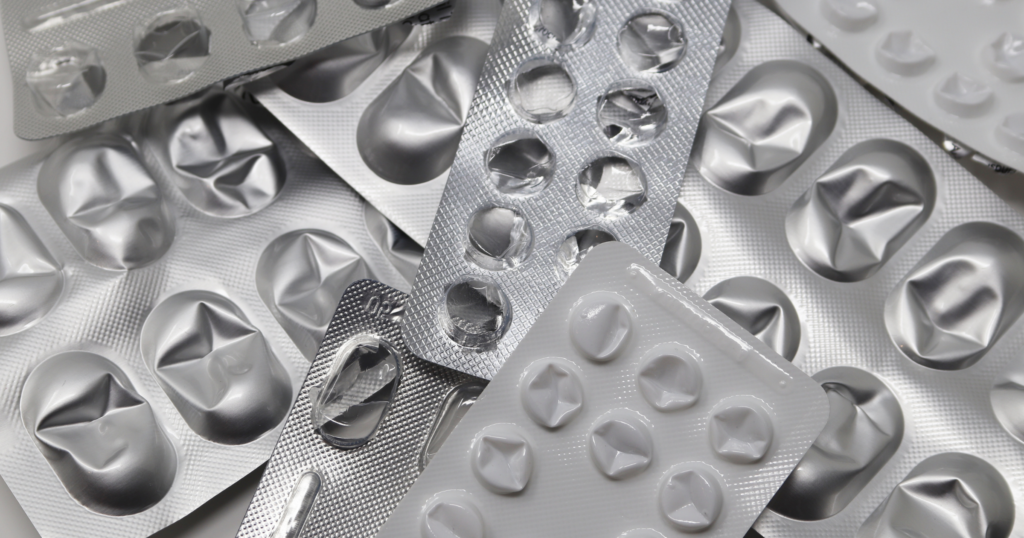Blister packaging, characterized by its clear plastic cavity sealed to a backing material, has become an indispensable packaging solution across numerous industries. This versatile packaging method offers superior product protection, tamper evidence, and visual appeal while maintaining cost-effectiveness. Understanding which businesses require blister packaging helps manufacturers, retailers, and consumers appreciate its widespread applications and benefits.
The Pharmaceutical Industry: The Primary Driver
The pharmaceutical industry represents the largest consumer of blister packaging worldwide. Prescription medications, over-the-counter drugs, and dietary supplements rely heavily on this packaging format for several critical reasons.
Pharmaceutical companies require blister packaging because it provides exceptional barrier properties against moisture, oxygen, and light – factors that can degrade medication potency. The individual cavities protect each pill or capsule from cross-contamination, while the sealed backing prevents accidental spillage. Additionally, blister packs offer excellent tamper evidence, ensuring patient safety and regulatory compliance.
The unit-dose presentation inherent in blister packaging helps healthcare providers and patients manage dosages accurately, reducing medication errors. This is particularly crucial for elderly patients or those managing multiple medications simultaneously.
Consumer Electronics and Small Components
The electronics industry extensively uses blister packaging for small components, accessories, and consumer devices. Businesses manufacturing items such as batteries, memory cards, USB drives, earbuds, and phone accessories depend on blister packaging to showcase their products effectively while providing protection during shipping and retail display.
Electronics retailers prefer blister packaging because it allows customers to see the product clearly while preventing theft – a significant concern for high-value, small items. The rigid plastic construction protects delicate electronic components from physical damage and electrostatic discharge.
Toy and Hobby Industries
Toy manufacturers and hobby product companies require blister packaging for numerous small items including action figures, collectible cards, model parts, and craft supplies. This packaging format allows retailers to display products attractively while keeping small parts contained and organized.
The toy industry particularly values blister packaging’s ability to showcase products while maintaining package integrity. Parents can inspect toys before purchase, while the secure sealing prevents loss of small components that could pose choking hazards.
Hardware and Automotive Aftermarket
Hardware stores and automotive parts retailers rely on blister packaging for countless small items including screws, bolts, washers, fuses, bulbs, and various replacement parts. This packaging solution keeps hardware organized, prevents mixing of different sizes or types, and allows for easy inventory management.
Automotive aftermarket businesses require blister packaging because it protects precision-manufactured parts from corrosion and contamination while enabling quick product identification. The clear visibility helps customers and service technicians select the correct components efficiently.
Food and Confectionery Sectors
Certain segments of the food industry utilize blister packaging, particularly for portion-controlled items, specialty confections, and pharmaceutical-grade nutritional products. Businesses producing items like breath mints, throat lozenges, vitamin gummies, and premium chocolates often employ blister packaging to maintain freshness and provide precise portioning.
Food manufacturers appreciate blister packaging’s ability to extend shelf life through excellent barrier properties while offering portion control that appeals to health-conscious consumers.
Medical Devices and Diagnostics
Beyond pharmaceuticals, the broader medical device industry requires blister packaging for various disposable items including thermometer covers, test strips, lancets, and small diagnostic tools. Medical device manufacturers need packaging that maintains sterility while allowing easy access in clinical settings.
The healthcare industry demands packaging that meets strict regulatory requirements while ensuring product integrity and user safety. Blister packaging’s tamper-evident properties and protective capabilities make it ideal for these applications.
Cosmetics and Personal Care
The beauty and personal care industry uses blister packaging for sample products, travel-sized items, and specialty treatments. Cosmetics companies require this packaging for products like sheet masks, nail art accessories, contact lenses, and premium skincare treatments.
This sector values blister packaging’s ability to maintain product hygiene while providing an upscale presentation that enhances perceived value.
Key Advantages Driving Adoption
Businesses across these industries choose blister packaging because it offers:
Product Protection: Superior barrier properties protect contents from environmental factors, contamination, and physical damage.
Visual Appeal: Clear plastic construction allows complete product visibility, enhancing marketing effectiveness and consumer confidence.
Tamper Evidence: Sealed construction provides obvious indication if packaging has been compromised, ensuring product integrity.
Cost Efficiency: Automated production processes and material efficiency make blister packaging economically attractive for high-volume applications.
Regulatory Compliance: Meets stringent requirements in regulated industries like pharmaceuticals and medical devices.
Theft Prevention: Secure sealing and size considerations help reduce retail shrinkage.
Future Outlook
As sustainability concerns grow, businesses requiring blister packaging are increasingly seeking eco-friendly alternatives. Recyclable materials, reduced plastic usage, and biodegradable options are becoming more important considerations. However, the fundamental advantages of blister packaging ensure its continued relevance across these diverse industries.
The rise of e-commerce has also increased demand for protective packaging solutions, with blister packaging providing excellent protection during shipping while maintaining product presentation for online retail photography.
Conclusion
Blister packaging serves critical functions across numerous industries, from life-saving pharmaceuticals to everyday consumer goods. Its unique combination of protection, visibility, and cost-effectiveness makes it indispensable for businesses dealing with small, valuable, or sensitive products. As technology advances and sustainability requirements evolve, blister packaging continues adapting to meet the diverse needs of modern commerce while maintaining the core benefits that have made it a packaging industry staple.
Understanding these applications helps businesses make informed packaging decisions while appreciating the sophisticated engineering behind this seemingly simple packaging solution.

